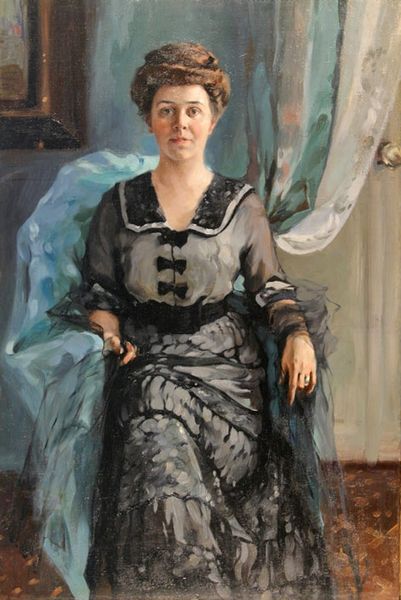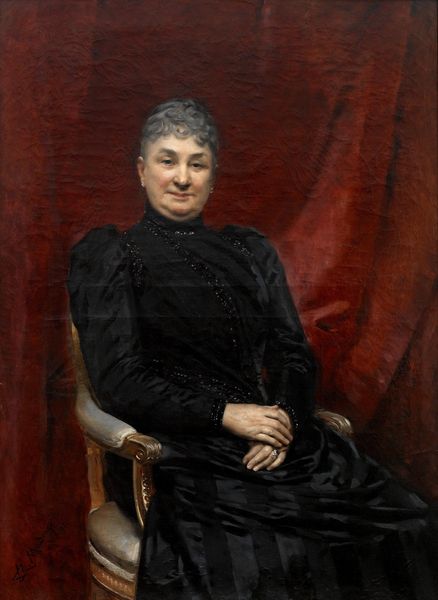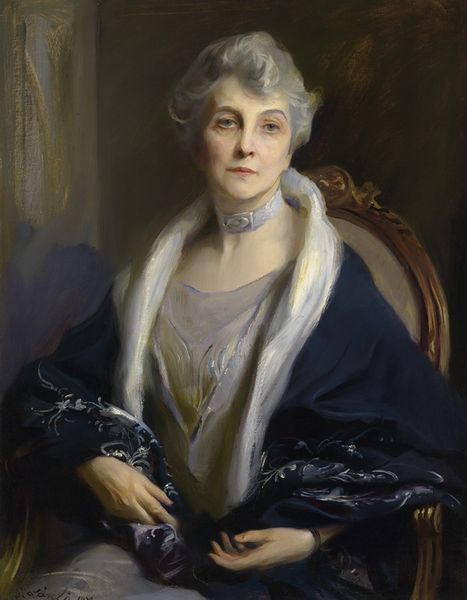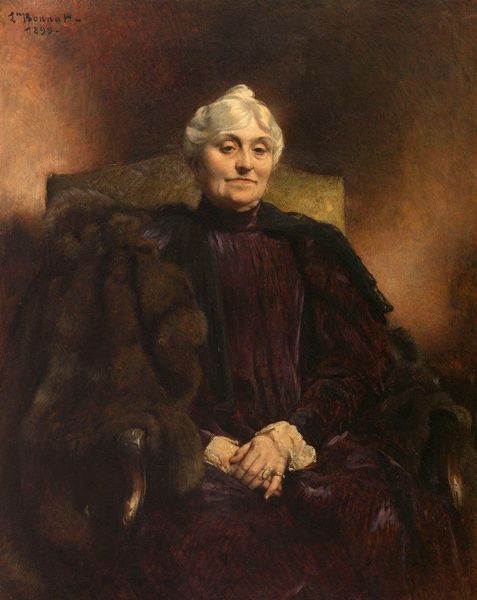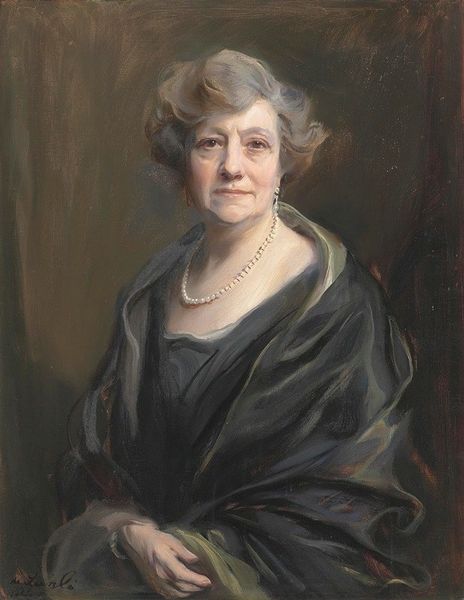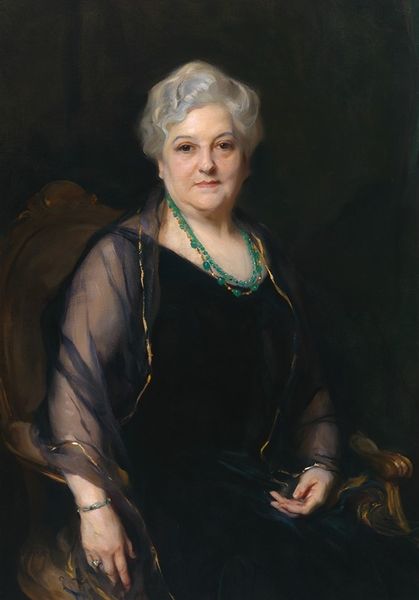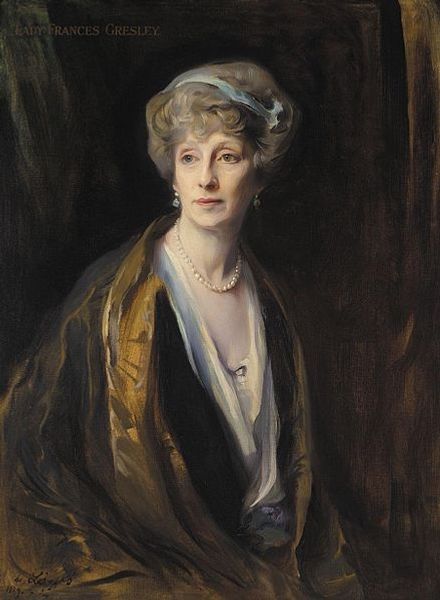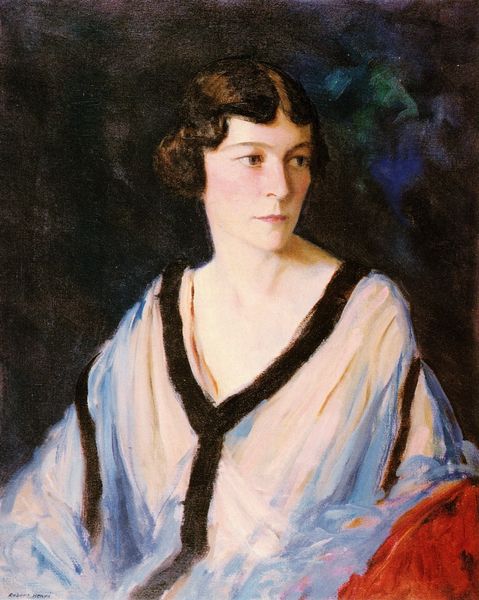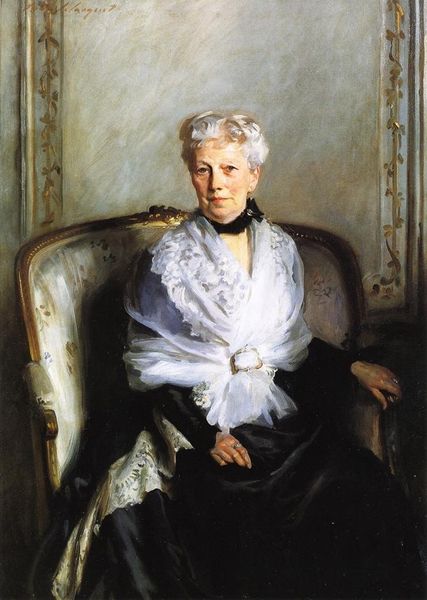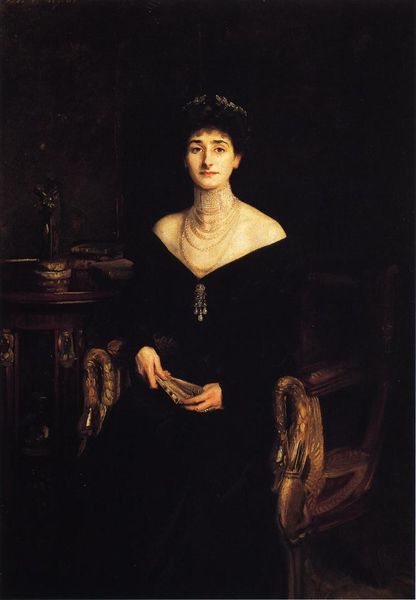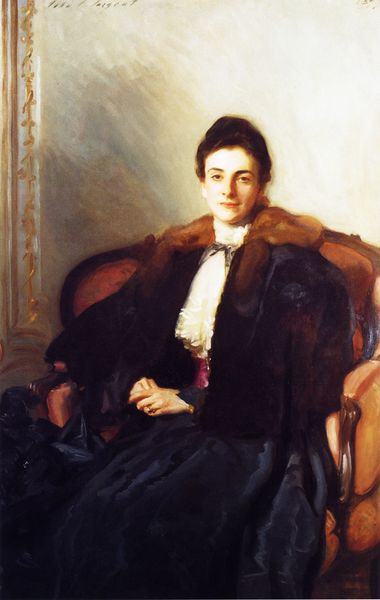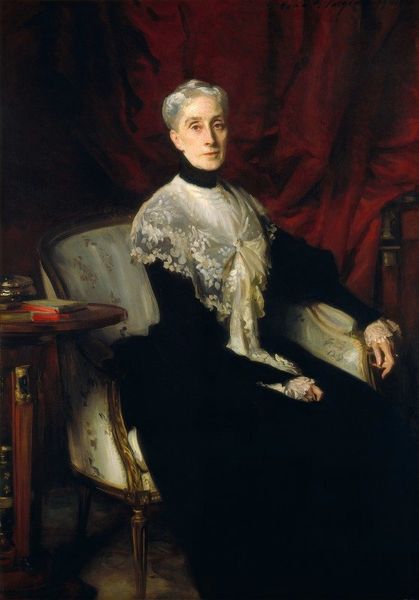
Copyright: Public domain
Curator: Looking at this painting, I feel an incredible sense of…serenity. There’s such a quiet strength in her gaze, isn’t there? Editor: Absolutely. It's a striking portrait, painted in 1913 by Frank W. Benson. The subject is Lida Shaw King, a rather remarkable woman, if I may add. I feel there's also more to this image than meets the eye when it comes to the complexities around women and education, power, and representation. Curator: I agree. The brushstrokes are so gentle, and that soft light…almost ethereal. But you’re right, there's something undeniably powerful about her composure. You mentioned something of significance. What did you mean? Editor: Lida Shaw King was a classics professor and principal of the Cambridge School for Girls. Here she is depicted in academic regalia. Note how the traditional academic dress somewhat neutralizes any potential eroticism frequently linked to impressionist representation of women. It definitely brings out interesting tension in how women of intellect were perceived—and how they chose to present themselves—at the turn of the century. Curator: It’s intriguing how the dark robes contrast with the lightness of her face and the almost ghostly white fabric beneath. Benson is capturing something profound about intellect, respectability, but maybe also a sort of...weight. Does she feel it too? The pressure of expectation? The robes do add weight, and importance. It could even feel a bit somber to her. Editor: That's a very sensitive read, given how society at the time constricted women and limited opportunities for scholarly engagement. We need to see her, Lida, and women of her standing at the time, as pathfinders of social mobility, access to higher education, as agents of change and knowledge. What do you feel when you consider her positioning within modernism's painting history? Curator: Within modernism? Well, I suppose one could argue she’s caught between worlds – the formal expectations of portraiture, the dawning of a new era. This painting isn’t radical in its form, not like the cubists. Maybe the radicalism is in the subject herself. In portraying a woman of intellect with such… quiet dignity. Editor: Exactly. This isn’t just a painting; it's a document, a statement, capturing a pivotal moment for women's access to professional power and agency within cultural history. And it makes one contemplate: How far have we truly come since Lida Shaw King's time? Curator: True. Maybe that quiet strength I sensed… that was defiance, resolve. Beautiful. Editor: Precisely. A silent revolution, brushstroke by brushstroke.
Comments
No comments
Be the first to comment and join the conversation on the ultimate creative platform.
